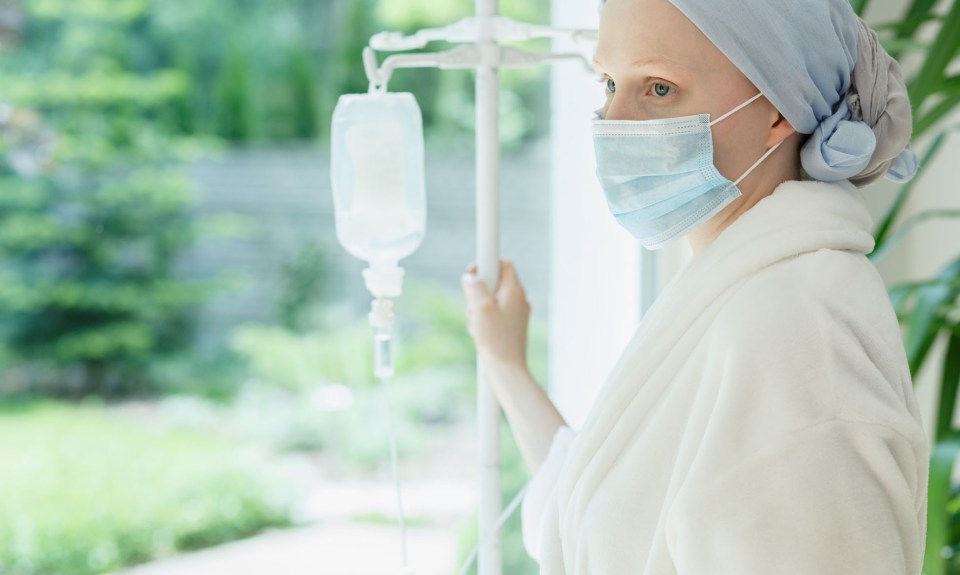There is no evidence that stress causes cancer and no evidence that yoga can prevent it.
However, the uncertainty of medical tests and treatments induce feelings of victimization and helplessness. A yoga practice can be a time to focus on how things are rather than focusing on the uncertainty. It can be an oasis of calm while going through the ordeal and may even increase your odds of survival.
Studies show that cancer survivors who were consistent with a yoga practice noted significantly less insomnia, depression and other symptoms associated with cancer treatments, as well as improved energy and mood.
Yoga is an ancient science including principles/practice of stretching (postures), diaphragmatic breathing and meditation and relaxation. As a therapist using yoga in the treatment of oncology patients, a treatment is designed to be tailored to individual need. Low energy levels due to cancer treatments require a modified active practice (postures) with restful restorative poses. Programs are designed with periods of rest to draw attention to the “after effects of the pose”. Time in-between movements allow for self /re-evaluation or a “checking in” on levels of fatigue, energy and pain and an opportunity to make changes that feel safe to the healing body. These are the most beneficial.
Gentle yoga movements and postures that are slow, regular and mindful can induce a release of tension. Patients with cancer and cancer survivors are slow to increase strength. Simple “reconnecting to my body” positions/movements like all fours cat pose, gentle supine twist or seated shoulder movements are a good beginning. Exert then rest. Reassess then evaluate how you feel. As a cancer survivor, ask yourself, should I continue or rest and then rest again. Holding postures, hot yoga or a vigorous practice is not recommended because of the energy depleting qualities.
Education and practice of yoga breathing is paramount
Yoga breathing techniques can improve oxygenation and help move lymph and theoretically improve immune function. It is also a great tool to help get through painful cancer treatment procedures. The practice can be done in any physical position with the hands placed at the belly button or lower ribs as a manual cue. The expansion of the lower abdomen occurs as the diaphragm muscle contracts downward. As the muscle gets stronger and its expansion longer, the connection to the parasympathetic nervous system is stimulated and calms nerves. The breath becomes an internal source of peace.
Reconnecting to the physical body is important
When diagnosed with cancer, a feeling of betrayal as if the body failed them may be overwhelming and to cope, some patients mentally detach themselves from their body. Treatments may leave physical scars and for a survivor, a reminder of a painful time. A breathing practice and meditation focus with positive body imagery leads to a path of acceptance, an ability to embrace strengths and reminder of the true healing power inside.
It is good to use meditation as a time to invite the quality healing you desire by visualizing its entrance to the body with the inhaling breath and its radiation to every cell in the body. During your practice, invite harmony and balance, patience and perseverance, peace and joy to every cell, tissue, every muscle, every organ and every system in the body. Be unwilling to let go of your peace for anything and teach yourself to find sanctuary in our own mind, a restful place to be and feel safe.
Consider an affirmation/mantra that resonates with you and that you will abide to
One example is, “I am not broken. I am whole” “I am not my body, feelings or my thoughts” “I am my soul”. Use Yoga to open up your spiritual space and see things as they are, in the present, rather than focusing on the uncertainty and fear of the future. A consistent practice increases hope and faith, is a therapeutic benefit and can improve quality of life.
Editor’s note: Before beginning any exercise routine, you should consult your physician.
The content of this site is for informational purposes only and should not be taken as professional medical advice. Always seek the advice of your physician or other qualified healthcare provider with any questions you may have regarding any medical conditions or treatments.




